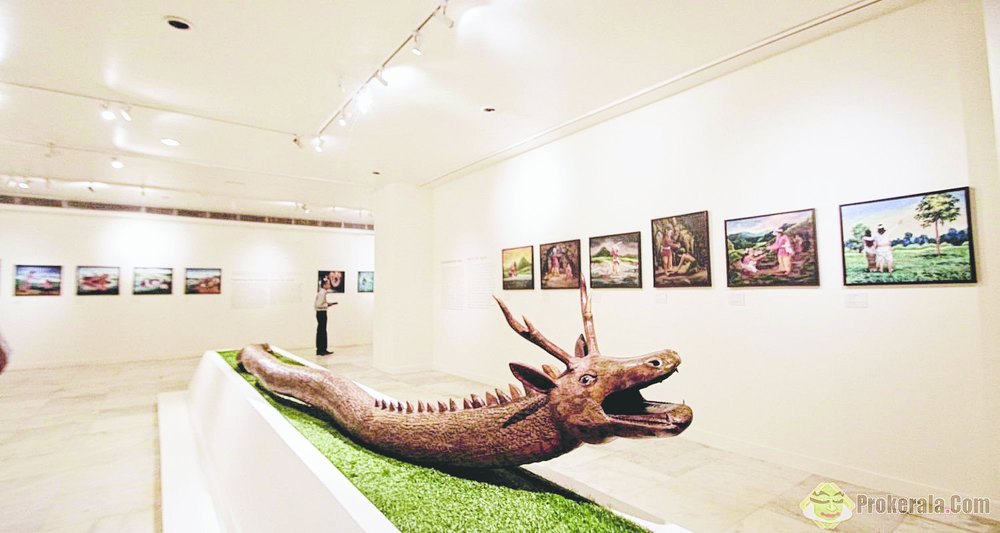
Imphal, July 22: India's very own Loch Ness monster, Poubi Lai, lived in Loktak lake in Manipur, according to Meitei folklore.
A sculptor from the state brought alive the legend in a wooden artwork of the mythical python, which will be on exhibition at the National Museum in New Delhi for 42 days.
Additional secretary, ministry of culture, K.K. Mittal, inaugurated the "Single Object" exhibition titled Poubi Lai - The Story of a Giant Python - yesterday.
The Indira Gandhi Manav Sanghralaya (IGRMS), Bhopal, in collaboration with National Museum, New Delhi, mounted the exhibit.
"In the recent past, the government has been placing emphasis on promoting the cultural heritage of the Northeast. With this exhibition, both the IGRMS and National Museum have taken a step forward to support this cultural awareness in Delhi," K.K. Mittal said at the inauguration.
Director-general of National Museum Sanjeev Mittal and IGRMS director Prof. Sarit Kumar Chaudhuri were present on the occasion.
According to Meitei lore, Poubi Lai is a giant mythical python, which lived in Loktak, the largest freshwater lake in the Northeast located 45km south of Imphal.
The creature appeared in a dream to master wood-carver late Karam Dineshwar Singh in 2002 and directed him to sculpt it. Singh belongs to the class of craftspeople associated with the royal family of the state. The artist found the root of a big tree at Leimatak not very far from the lake as told in the dream and gave shape to the python in six months.
Legends say when Poubi Lai started killing fishermen in and around the lake, the people of Moirang kingdom sought help from a wise man, Kabui Salang Maiba, who belonged to the Kabui tribe. Maiba finally killed the python.
The 21-foot-long sculpture is a visual interpretation of the creature. It was first exhibited in the Manipur State Museum in 2002 and later became permanent collection of the IGRMS, which declared it as an "Object of National Importance".
It is registered under the "AA" category of museum collections. The work had even travelled to France for exhibition.
"Art historians note the sculpture was a first-of-its-kind entry that drew the attention of a large audience with the live presentation of Poubi Lai about which they have heard only in stories. The exhibition tells the story of Manipur's rich culture," Meghachandra Kongbam, a Manipur government official posted in Delhi, said.
Loktak lake is important for Manipur as it not only shaped the state's culture but also its economy. The 500 square km lake is a Ramsar site and one of the most threatened wetlands in the world.
"The exhibition will definitely make visitors from around the world understand the value and importance of preserving the lake apart from the cultural side," environmentalist R.K. Ranjan Singh said.
Social anthropologist M.C. Arun said Loktak is "very important for Manipur. The exhibition of the artwork will tell the history of Manipur, the role of Loktak in our cultural heritage and its overall environment. It will also demonstrate how rich are the state's artworks", he added.










